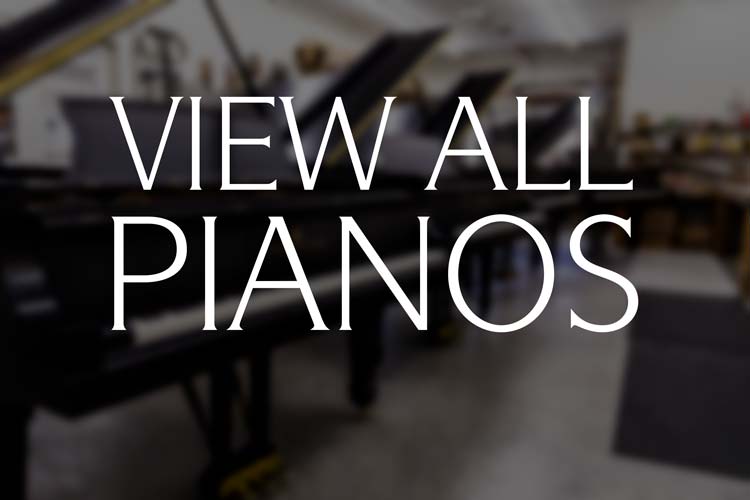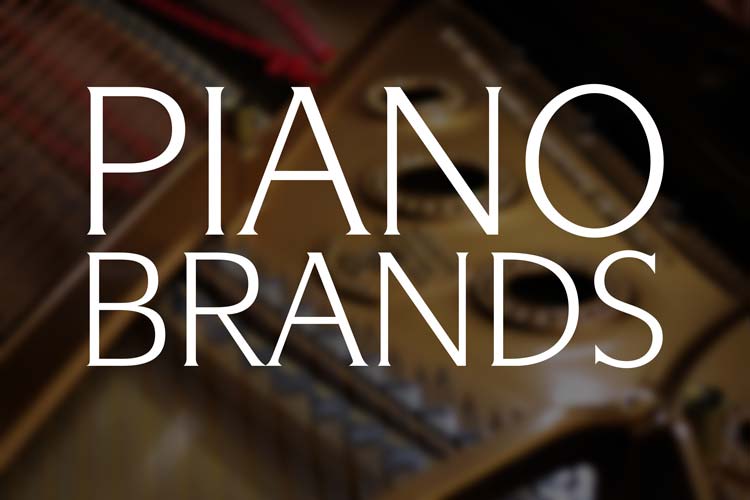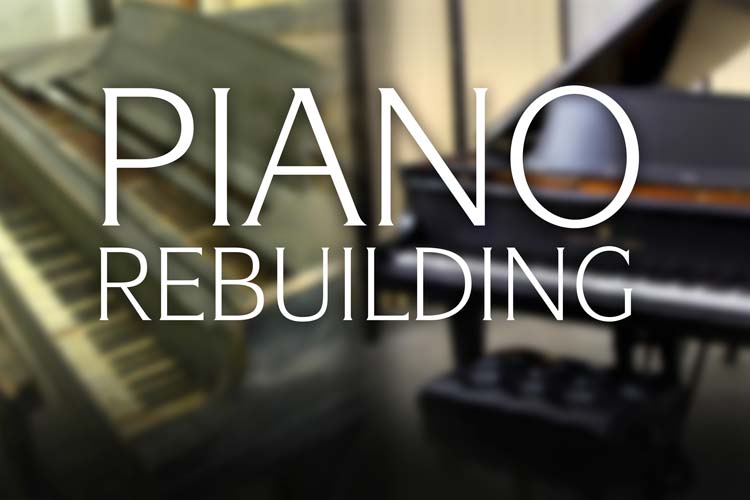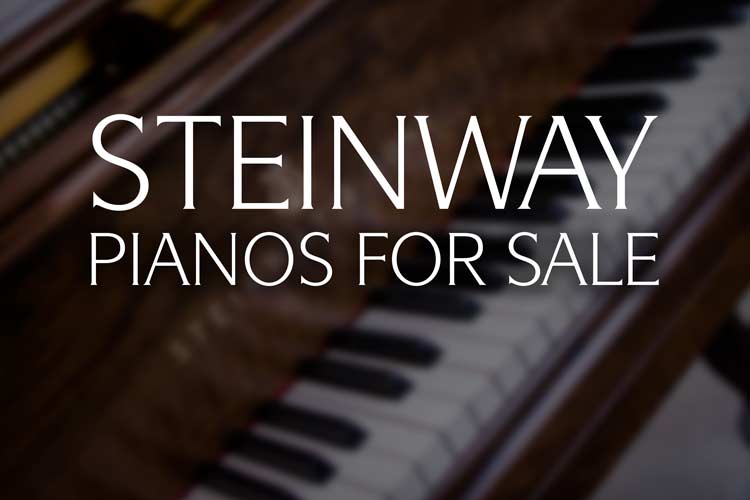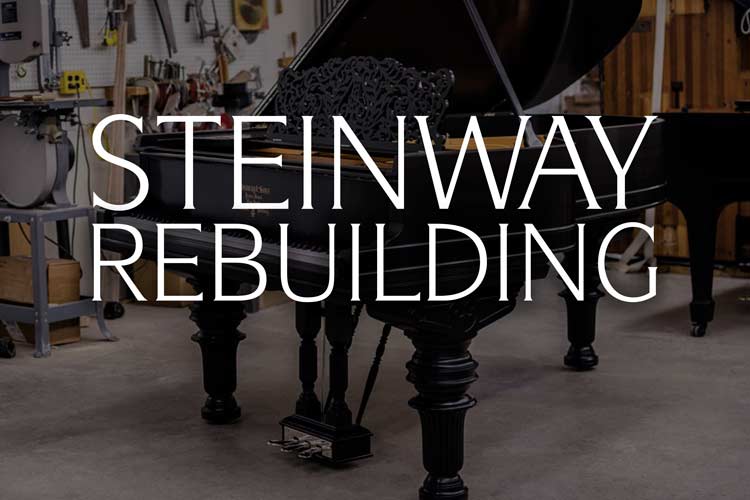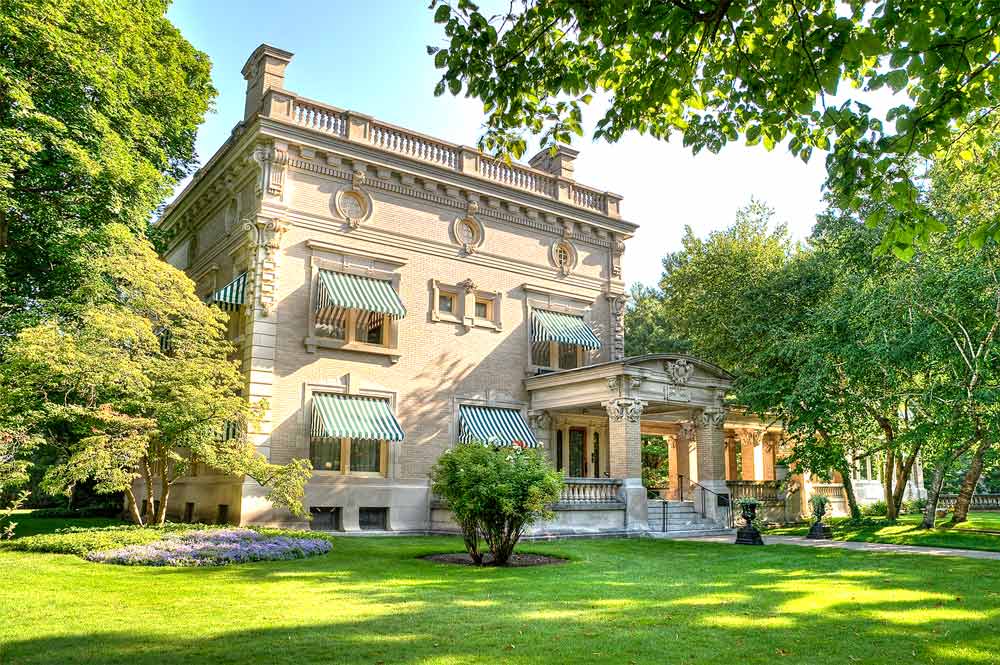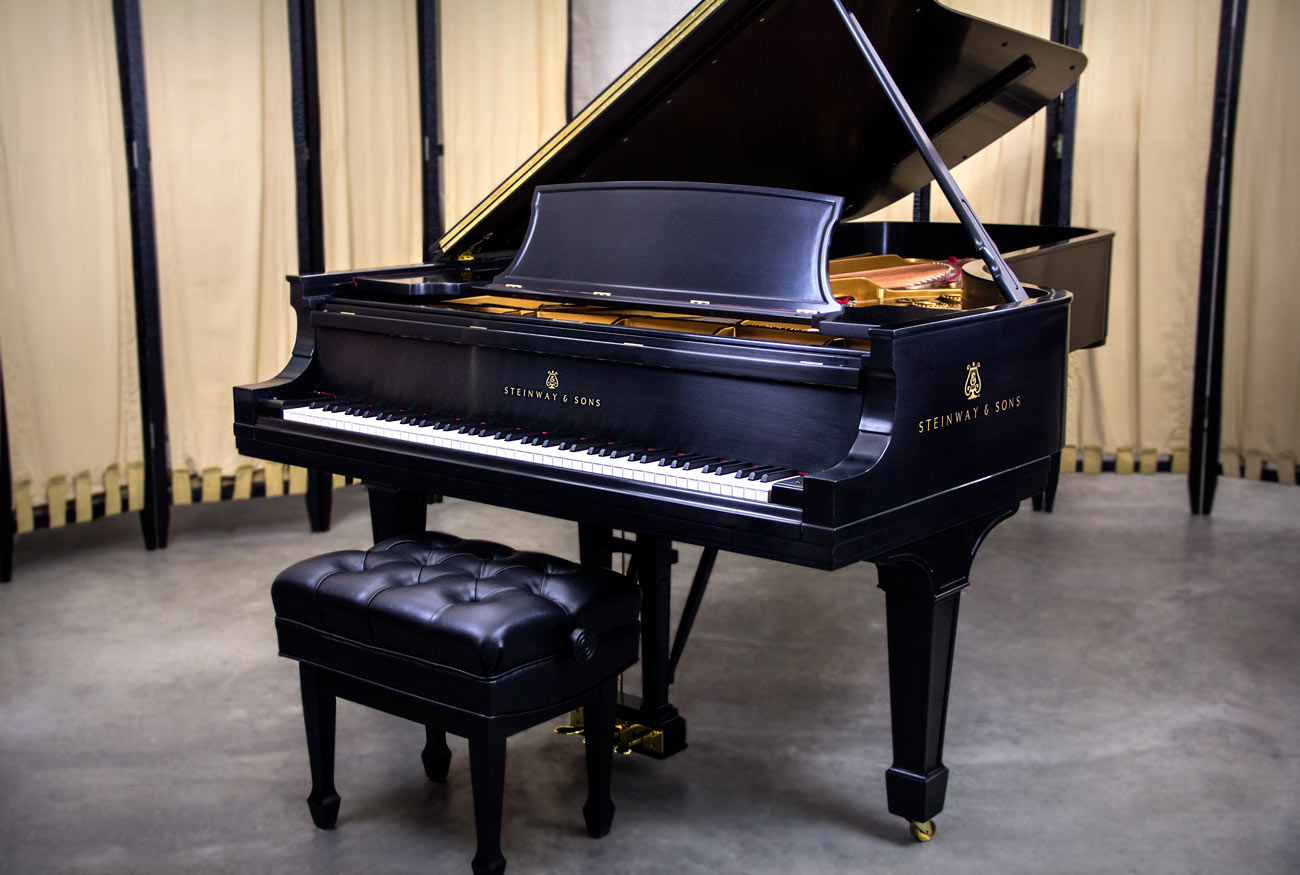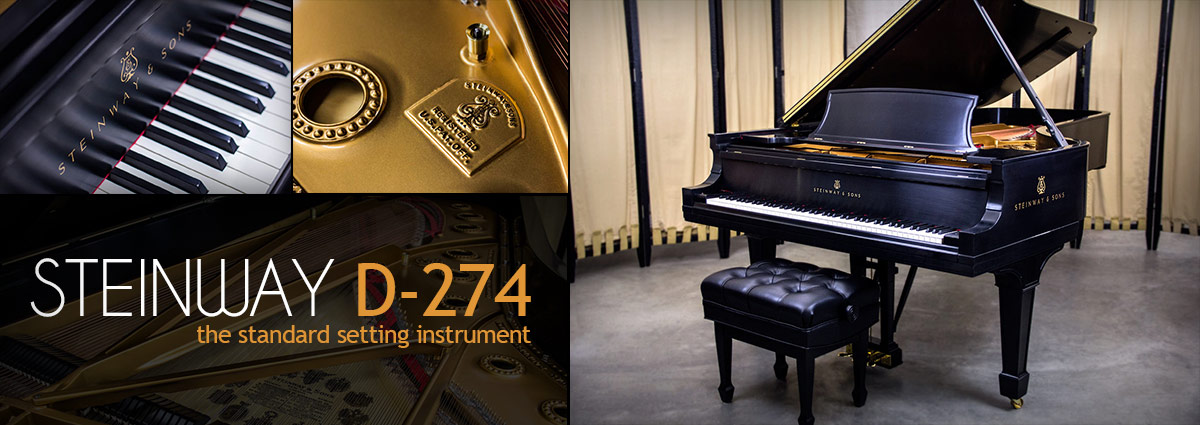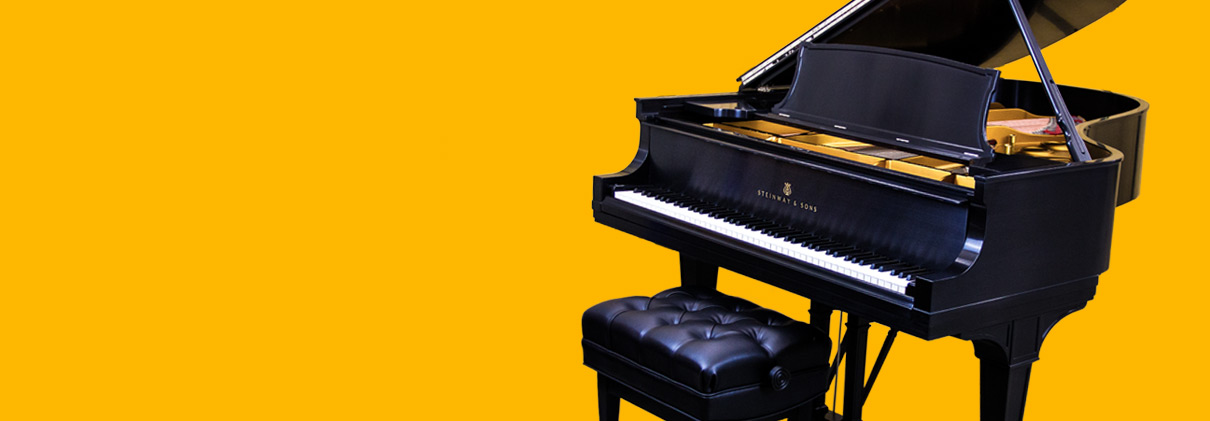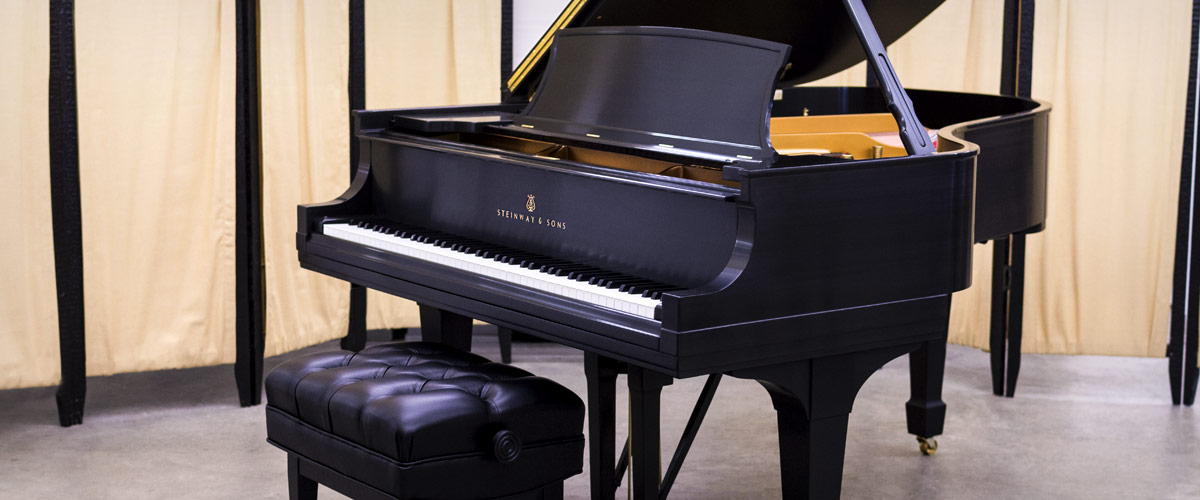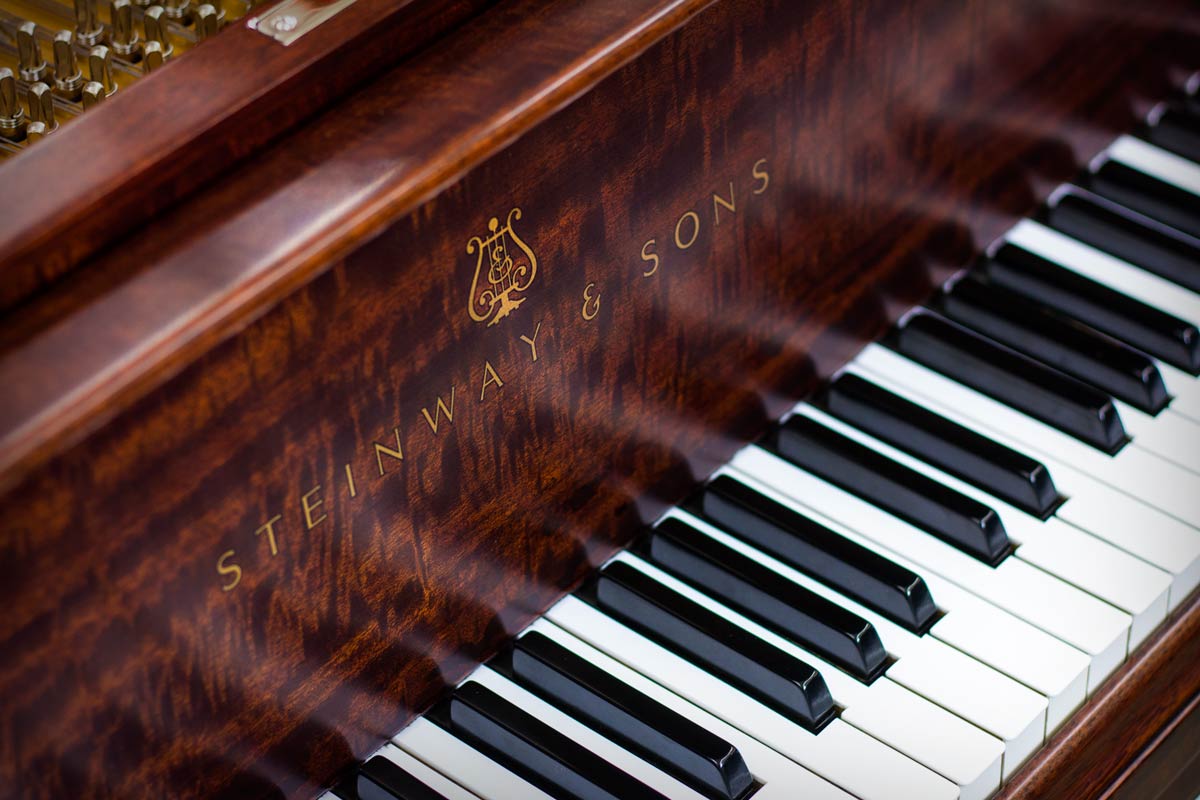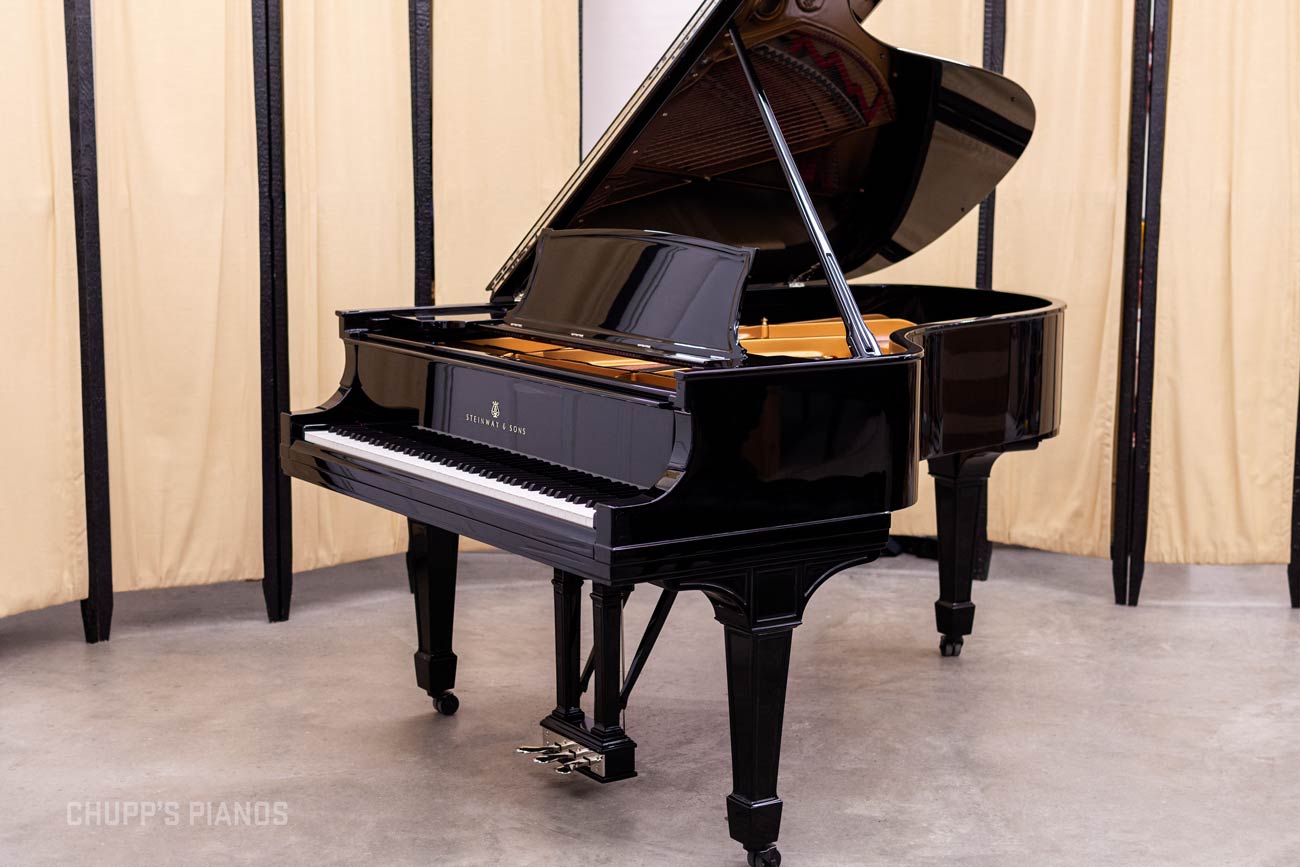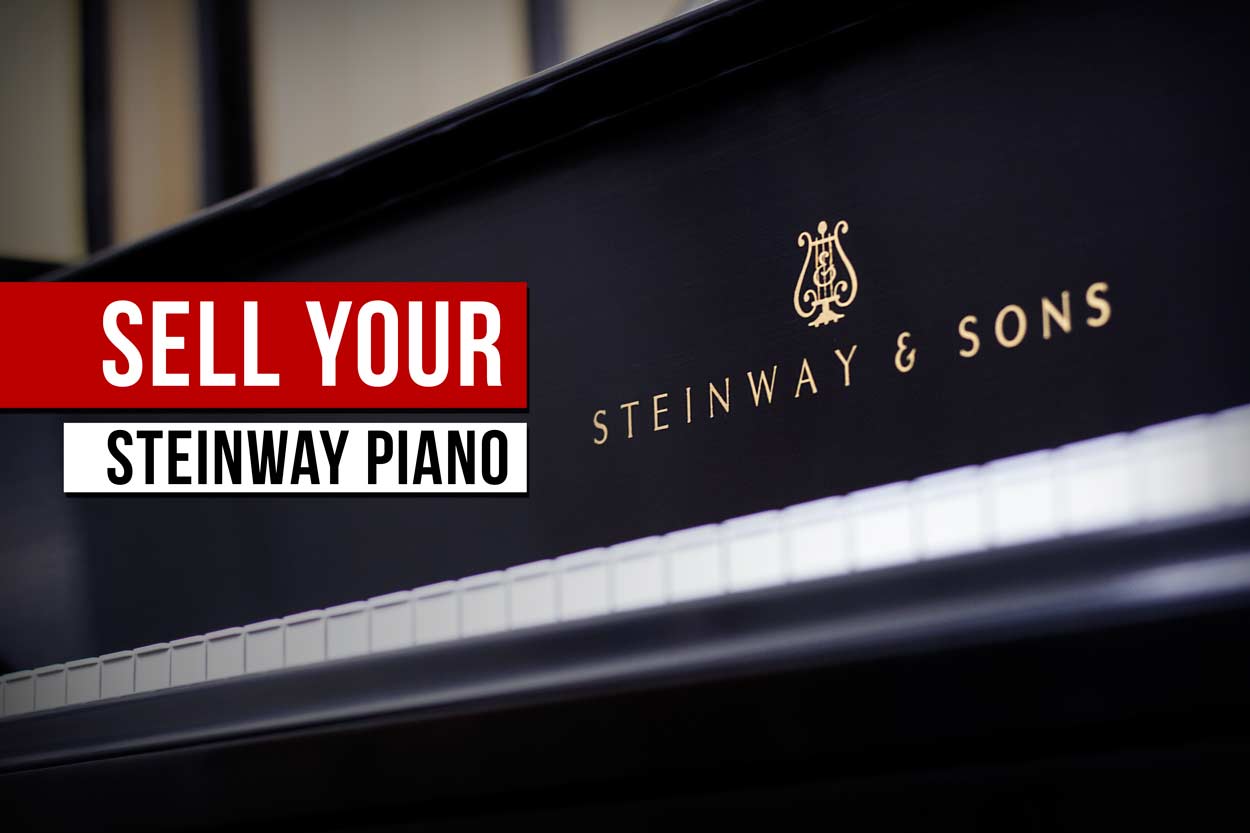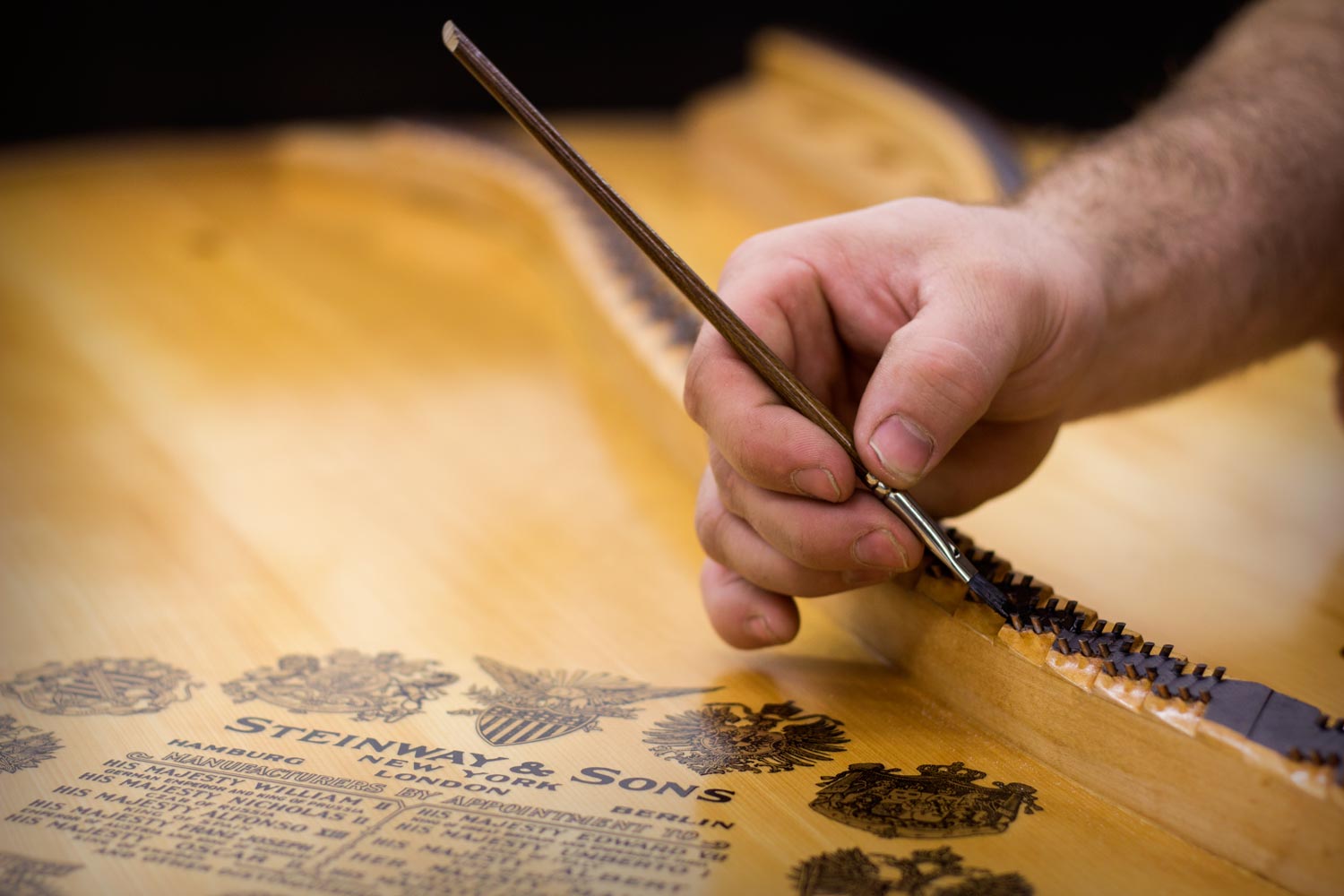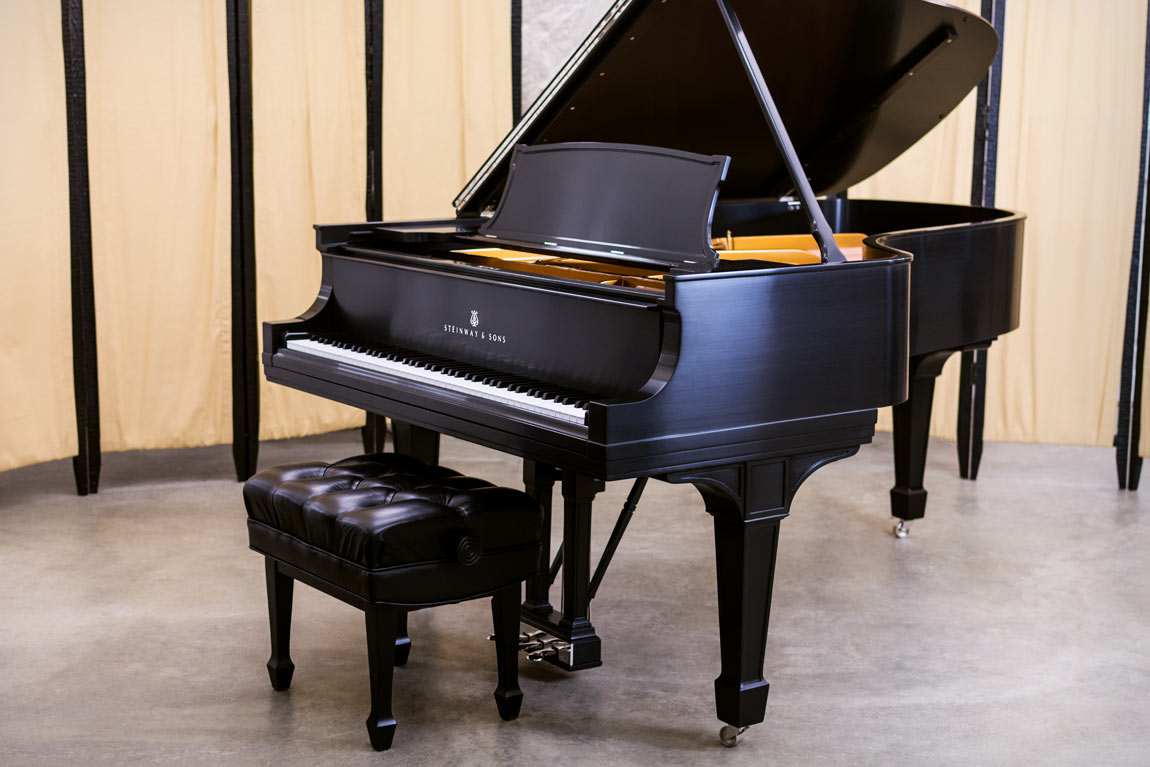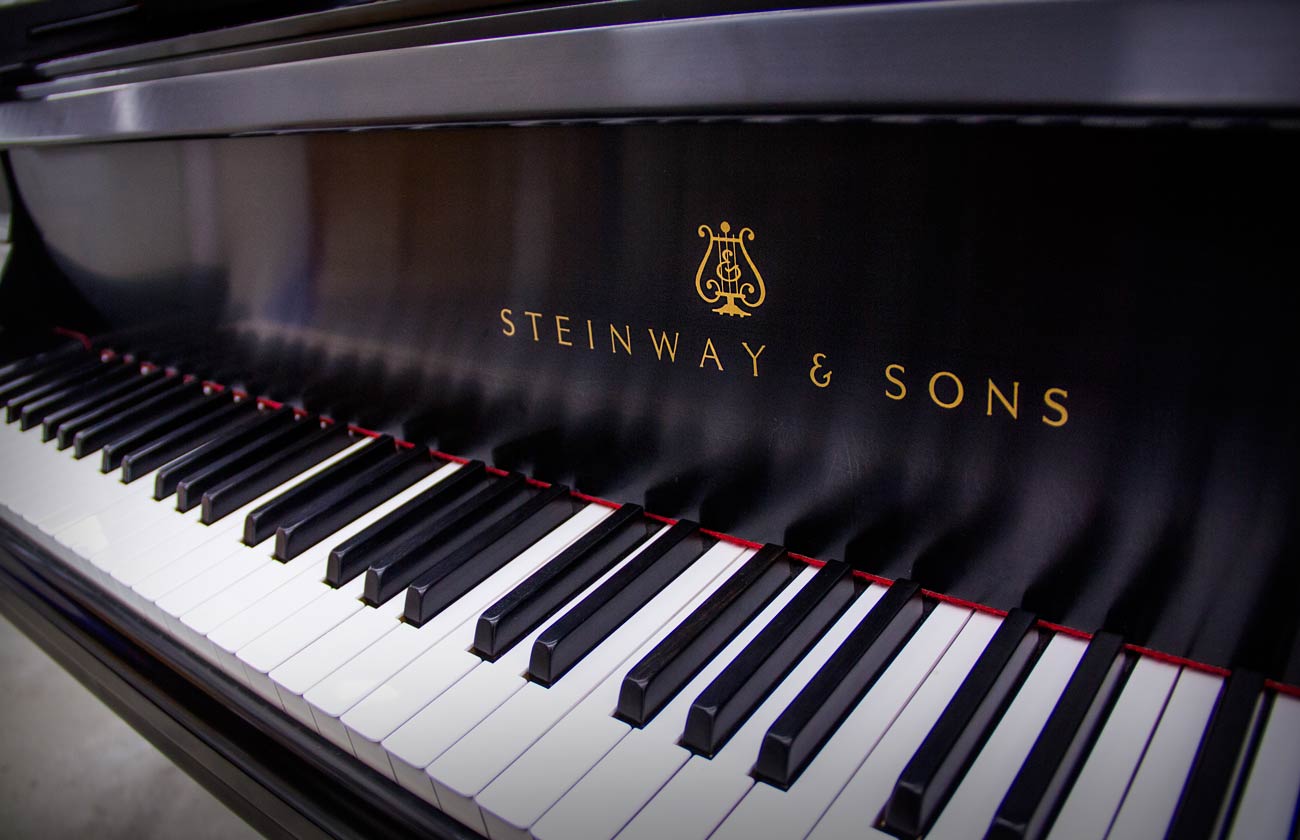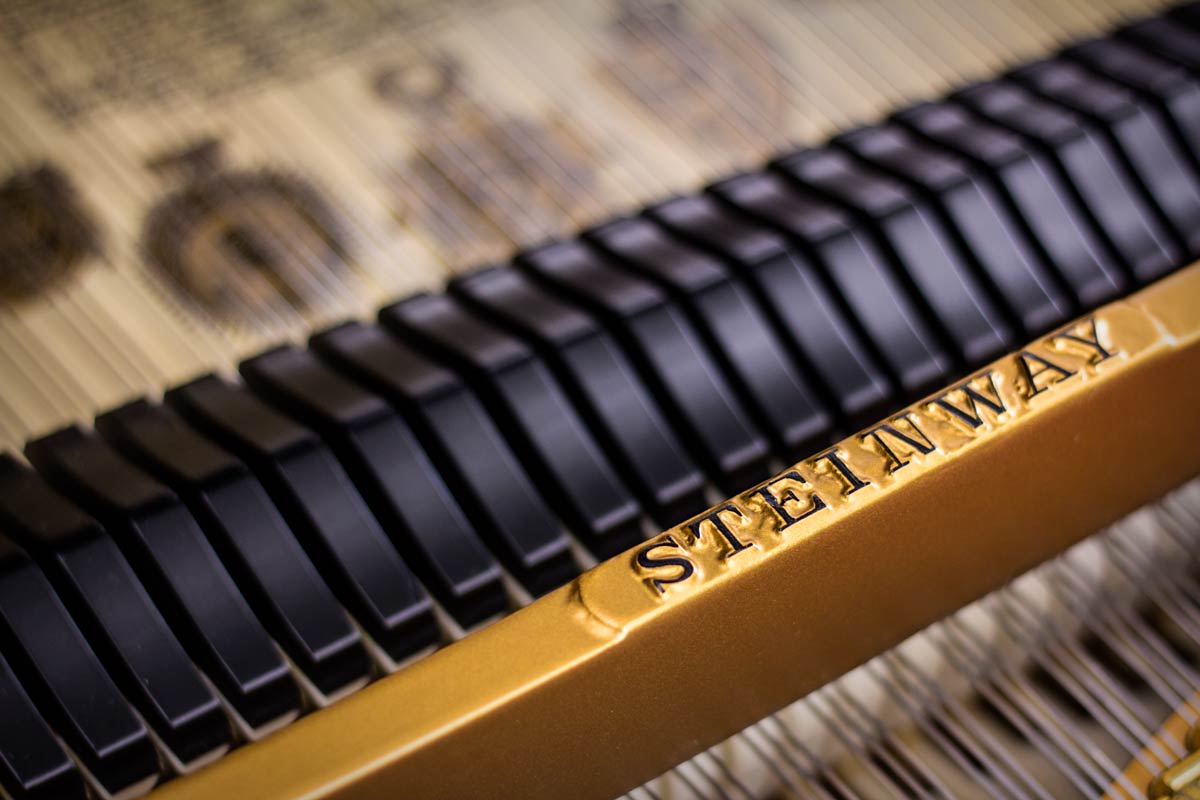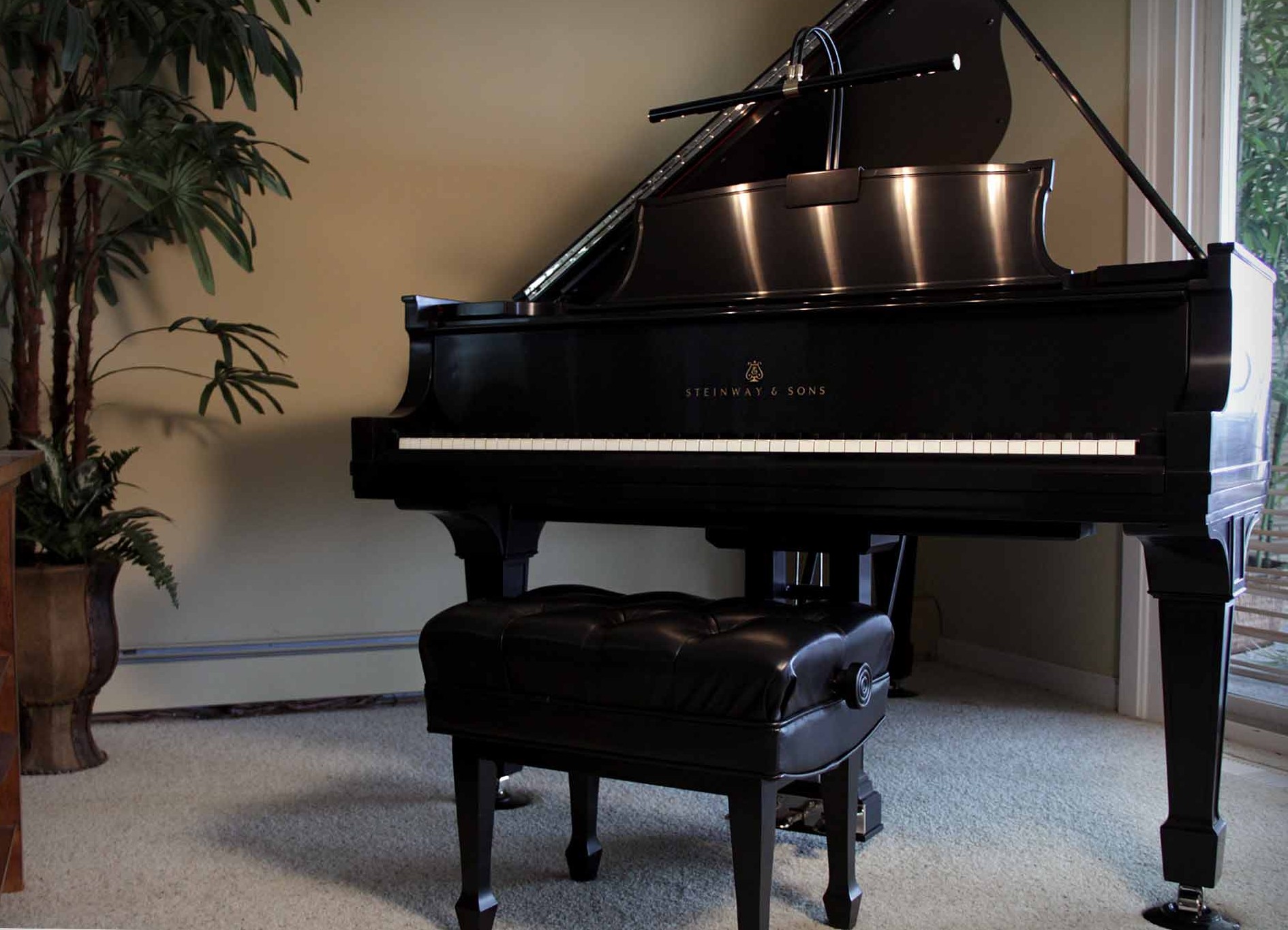IN THE NEWS: Chupp’s Restores Historic Baldwin Piano for Elkhart, Indiana Museum
Chupp's Piano Service Restores Historic Baldwin Grand Piano
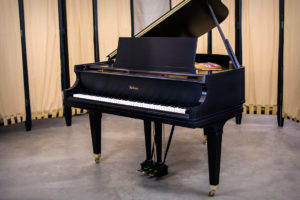
ELKHART - "A community is the sum of its shared history, so in an age when information is created, shared, has trended and is forgotten in a matter of minutes, museums represent something different.
“What makes local history important is that people who are living in the community today — that they understand what the roots of their community are all about, and it's very distinct from one community to the next,” Bill Firstenberger, executive director of Ruthmere Museums Campus, said in an interview. “We're a place that reminds the residents and visitors to our community what we’re all about: both good and bad, but hopefully mostly good.”
A Rare Opportunity | 4 Restored Steinway Model D Grand Pianos
UPDATE: Several of these grand pianos have now been sold. #275187 and #233201 are still available.
The Steinway & Sons Model D is perhaps the most iconic concert instrument in world history. These 9’ grand pianos truly are the apex of Steinway engineering and craftsmanship. The Model D offers artists a level of expression unlike any other and has come to set the standard by which other concert pianos are judged. It is very rare to find one, let alone several fully rebuilt Model Ds available to compare in any location. Here at Chupp’s Piano Service we are proud to have four fully rebuilt Steinway & Sons Model D Concert Grand Pianos in performance ready status in our facility, with more in the process of being rebuilt. Each of these wonderful instruments feature their own distinct musical quality.The Steinway Model D | The King of Instruments
The Steinway Model D Benchmark
The World's Standard For Concert Grand Pianos
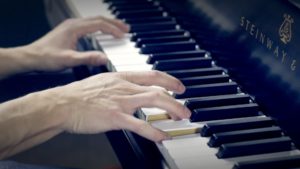
The Steinway & Sons Model D grand piano is one which signifies an instrument's grace, power, and delicacy unlike any other. Measuring at 8'11 3/4" in length, the Model D towers above regular grand pianos, which are usually around 5’6” to 6’ long. Truly the pinnacle of Steinway's historic dedication to innovation and top shelf craftsmanship, the thousand pound Model D-274 truly is the standard by which other concert pianos are judged against. Decades of craftsmanship and development, signified and represented by one instrument it has long been considered the first choice of concert pianists.
The Interior Parts of a Grand Piano
A Basic Overview & What You Need to Know
The grand piano is one of, if not the most distinctive and recognizable instruments in history. Invented in the early 1600s by inventor Bartolomeo Cristofori, the piano has a long and rich history. The mention of a grand piano may conjure up images of a shiny black cabinet and seemingly countless black and white keys. But while the outside is magnificent, the inside is where the heart of the piano truly lies. There are over 12,000 parts in a ‘basic’ Steinway grand piano and the vast majority of them are held in the interior of the cabinet. The piano truly is a modern mechanical marvel! Here is a quick rundown of the basic interior parts of a grand piano.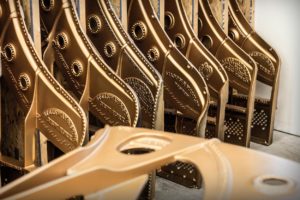 The Plate
The Plate
When lifting the lid and looking inside, the first piano part you probably will notice is the large cast iron plate. Although colors and casting methods vary from manufacturer to manufacturer, the basic function of the plate stays the same. The plate (sometimes called the piano's harp) serves as the backbone for the piano. The strings are affixed to the plate and the pins in the pinblock, so it must be able to withstand up to 40,000 pounds of tension. The large holes you see on the plate are cooling holes, which allow the cast metal to cool evenly. Usually the plate features various patent information and logos from the manufacturer. (You have to put your branding somewhere!)
The Steinway Model O vs. Model L – What’s the Difference?
The Steinway Model O vs. the Model L | What's the Difference?
Question: “The Steinway Model O and the Model L grand pianos seem to be about the same? What is the difference?
Similar Yet Different | Steinway Model vs. Model L
There are many differences between the various models of pianos bearing the name of Steinway & Sons. From the diminutive 5’1″ Model S to the imposing 8’11” Concert Model D, Steinway pianos run a wide range of sizes and sound. Each size of piano has its place and purpose. However there are models that are considered to be very similar and the Model O and the Model L are two of those. The Model O and the Model L are both about the same size and have actually both replaced each other during various periods in the Steinway & Sons company history.Dr. Howard Lantner on his Restored Steinway Model C
Letter of Recommendation | Restored Steinway Model C
Chupp's Piano Service recently fully restored a vintage Steinway & Sons Model C Semi-Concert Grand Piano for neurosurgeon Dr. Howard Lantner. He was kind enough to send in the following letter of recommendation about his experience purchasing from Chupp's Pianos.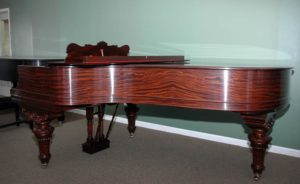 "I had taken piano lessons as a child for few a years. While I enjoyed it, it was a chore to practice, so quit after elementary school. I had hoped to resume it down the road. 24 years later, I finished school and training and settled in Connecticut. My parents still had the old upright piano in their home and let me take it to my home. I started taking piano lessons on it and hoped that one day I would progress enough to be worthy of a vintage Steinway Grand. That was 23 years ago.
"I had taken piano lessons as a child for few a years. While I enjoyed it, it was a chore to practice, so quit after elementary school. I had hoped to resume it down the road. 24 years later, I finished school and training and settled in Connecticut. My parents still had the old upright piano in their home and let me take it to my home. I started taking piano lessons on it and hoped that one day I would progress enough to be worthy of a vintage Steinway Grand. That was 23 years ago.
The Steinway Model A-1 vs. A-2 vs. A-3
The Steinway Model A Family | What's the Difference?
Question: “I was looking at Steinway Model A pianos and noticed that there are pianos labeled Model A-1, A-2 and A-3 and it is getting a bit confusing. What is the difference between these models of Steinway pianos?
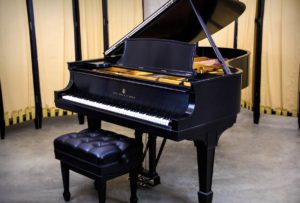
The First Model A Grand Piano | 1878
The Model A family of pianos consists of several 6' variants in Steinway's line of grand pianos. The A-1, A-2 and A-3 are all in the same family, yet there are some distinct differences, and even differences within those models. Steinway & Sons was founded in 1853 and the first Model A, the A-1 was first introduced back in 1878. This piano measured 6’ in length. This piano was an 85 note piano and the scale design was scaled down from the larger Model B. When first introduced the Model A was actually the smallest of all of the grand pianos built and sold by Steinway. (This was before the introduction of the Models S, O, L or M.) The scale design was crafted by C.F. Theodore Steinway, an innovative man credited with many of the patents and technical advances introduced by Steinway in their early days of operation. This model was fairly historic in terms of innovation and introduced the bent-rim case construction, which allowed for a better transfer of soundboard vibrations, a technique still in use today.Our Portfolio of Work | Unique Pianos
Steinway & Sons Sketch #425 | Only One Manufactured
This Model A-II Grand Piano is the only Sketch #425 ever manufactured by Steinway & Sons. Featuring a stunning Tiger Oak veneer and ornate case carvings, this piano has a long and rich history as well! We completely rebuilt this unique and truly one of a kind piano. Click the photo below to read more.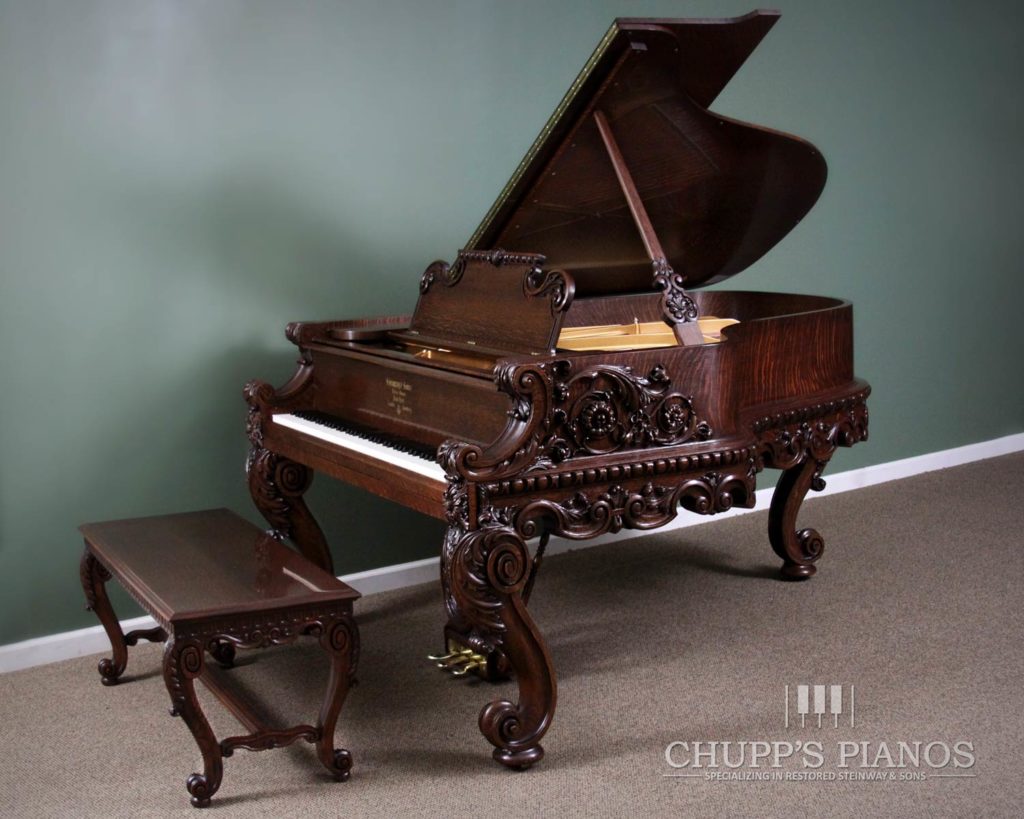
The Steinway Model B – “The Perfect Piano”
About the Steinway Model B Grand Piano
The First Model B Grands | 85 Notes
The Steinway & Sons Model B is considered by many to be a perfect balance of size and power making it a very versatile instrument. Measuring 6'11" in length, 58" in width and weighing well over 700 pounds these pianos are much larger than a Steinway Model S, M, or L. (And a bit larger than the somewhat comparable Model A-II.) The Model B 'Music Room Grand' was introduced in 1878 as a replacement for the piano that Steinway called the Monitor Grand. This instrument is considered to be the first modern piano ever built by Steinway. (The first several Model B pianos were built in the style of these Monitor Grands.) These early Model B Grands featured an 85 note keyboard and were offered in various art case cabinet styles. A capo d'astro bar was utilized in place of agraffes for notes 52 to 85. In 1891 #73212 the first Model B with an 88 note keyboard was introduced and in 1897 the Steinway factory in Hamburg, Germany began production of the Model B.A Unique Steinway Model D Grand Piano
Model D #269017 | A Unique Steinway Piano
In the early 1980s, I had a long conversation with Fred Drasche the former head service technician at Steinway. As we discussed the history of Steinway and their instruments, he told me that around 1950, Steinway produced two Model D grand pianos with Western Red Cedar soundboards. The red cedar was used in place of the regular spruce soundboards. His words were "those were two of the best sounding Steinway Ds I ever heard." For many years, we here at Chupp's Pianos wanted to install a western red cedar soundboard. This goal was something which we were finally able to accomplish recently! Out of five pianos in which we installed western red cedar soundboards, Steinway Model D #269017 is the most powerful of them all. Some of the finest acoustic guitars incorporate western red cedar tops to obtain optimal tonal quality so utilizing this material in musical instruments is not uncommon. Attached is a link to more information about the piano and photos are embedded below.History of Steinway & Sons Pianos
Steinway & Sons | A Basic History
In the early part of the 20th century there were more than 300 piano manufacturers in the United States alone, churning pianos out of factories large and small at a rapid pace. A piano was THE luxury item that everyone wanted in their home. If you didn't have one already you wanted one and if you had one, you probably wanted to upgrade to a better one. Today, few of these companies remain in business, victims of changing taste and economic swings. However Steinway & Sons continues on. The Steinway name is everywhere. From the cabinets of living room baby grand pianos to the foremost concert venues in the world, the mention of Steinway still commands a deep respect for the instruments and the music artists create with them. Here is a basic history of this famed business.The Founding of Steinway:
The company was founded on March 5, 1853 by Henry Engelhard Steinway. An immigrant from Germany, he had already built 482 pianos by the time he founded the new company in New York, New York. His first Steinway & Sons piano sold to a local family for the price of five hundred dollars. The company grew rapidly. So rapidly that within a year he moved the business to a larger facility on Walker Street. By the 1860s a new factory housed the piano manufacturing and a workforce of 350 were producing over 1,800 pianos a year. In the early days of Steinway, new ideas and innovation were key to their success. The famed duplex scale, overstrung bass strings and many other industry changing designs were developed during this time. The Steinway piano did battle against other popular brands during this time, including Mason & Hamlin, Chickering and Sons and more. The company secured many awards at various trade fairs, which bolstered the reputation of the instruments. The Steinway name had been cemented as one linked to quality and new ideas.Expansion and the World War: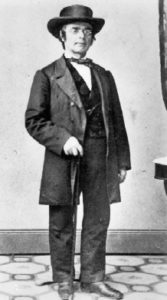
It was clear at that point that Steinway pianos were there to stay and the company continued to push through rapid growth. To reach the European market, William Steinway and C.F. Theodore Steinway built a factory in Hamburg, Germany in the year 1880. Hamburg Steinway Pianos share many of the same innovations and techniques as their New York brothers, and designers share ideas between the two factories. However there are differences that make these instruments unique and sometimes preferred by artists. Speaking of artists, in the early 1870s the Steinway artists program was born. This program where pianists are supplied the best Steinway & Sons pianos is a useful promotion for both the company and the artist themselves. (Other companies have utilized the same formula, but Steinway has had the most success by far.)
Chupp’s Restores Steinway Piano for Cheyenne Civic Center
Cheyenne Civic Center's Piano Ready for Upcoming Shows:
Recently Chupp's Pianos restored a Steinway & Sons Model D Concert Grand Piano for the Cheyenne Civic Center. The piano was carefully rebuilt and regulated by our expert piano technicians to bring back the iconic Steinway tone we all know and love. Tim Chupp recently traveled out to Cheyenne, Wyoming to make some finishing touches to the instrument in its new home. Attached below is a photo of the instrument sitting on the concert venue's beautiful stage.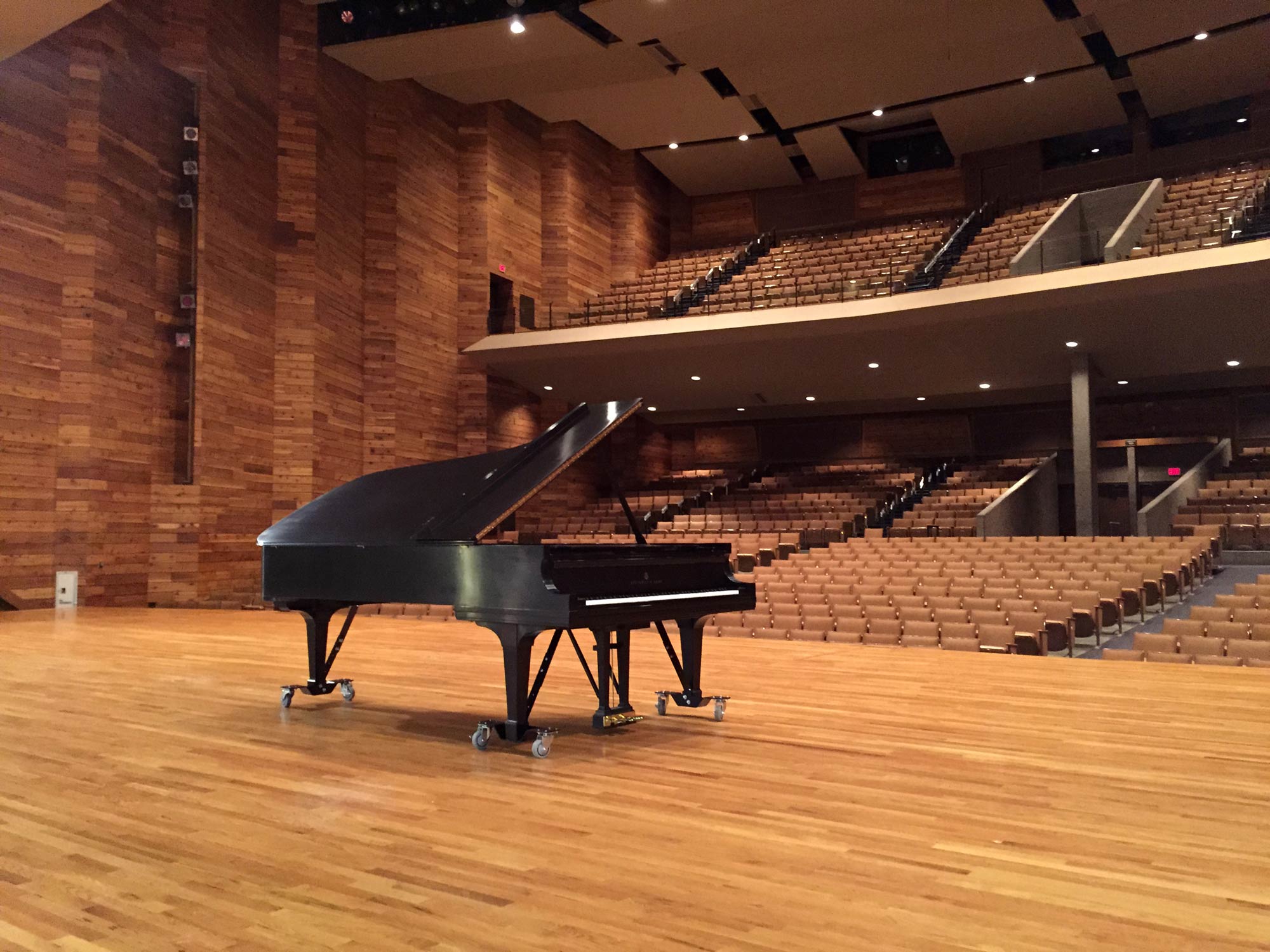
Should I buy an Upright or Grand Piano?
Which style of piano is right for you?
Upright vs. Grand piano, that is the question. Or at least one question that we hear often. Buying an instrument, especially one as large as a piano is a decision that shouldn’t be made in a snap. And deciding which style of piano to go with is one of the first steps in choosing the instrument that is right for you and your lifestyle. The last thing you want is to run out and buy an instrument that simply will not work with what you need and where you live. So here are a few things to look at when deciding which direction to go.…

